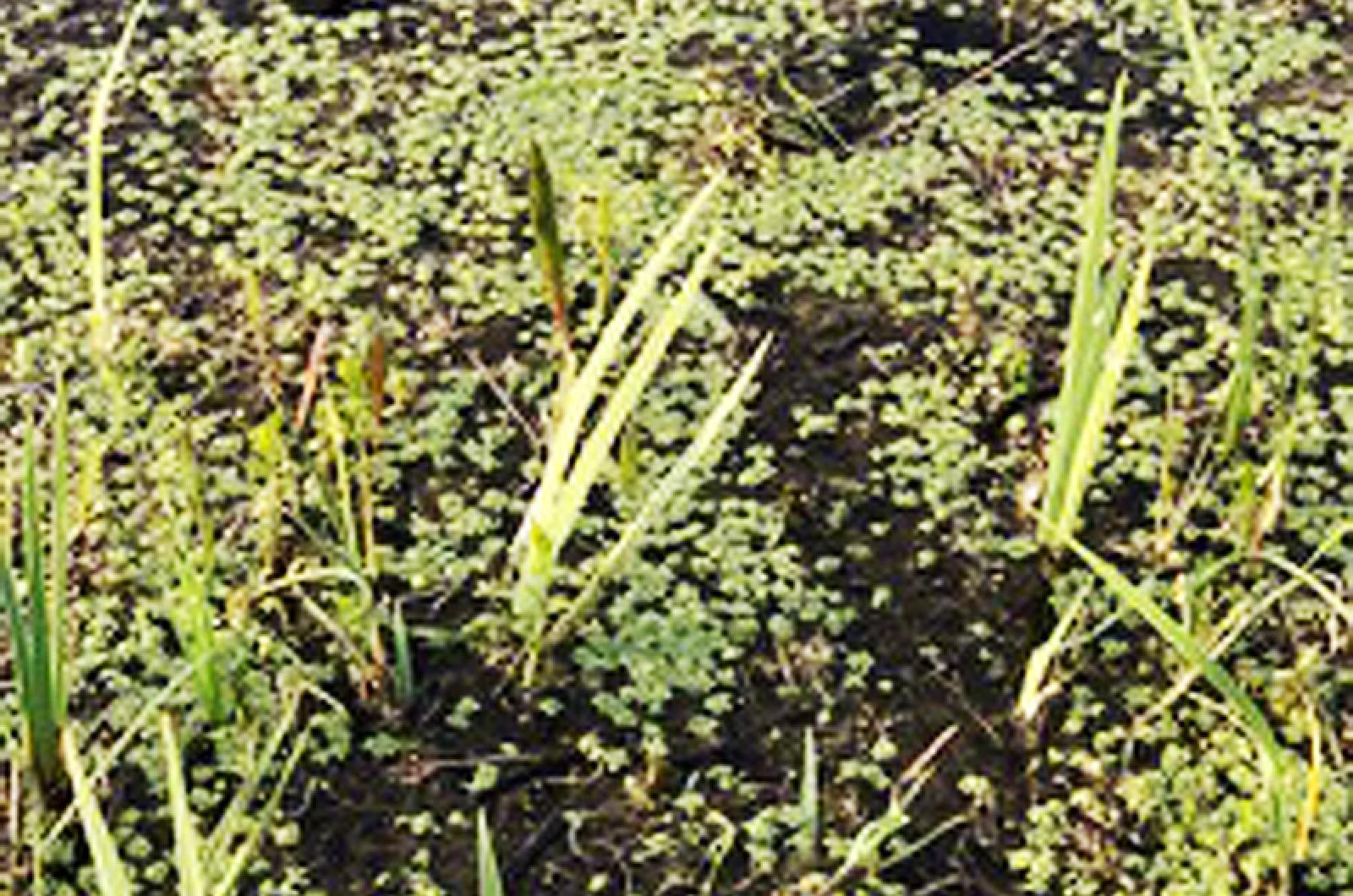If it doesn’t look like a duck, walk like a duck, or quack like a duck, then it must not be a duck.
In the case of duckweed, that assessment is correct. Duckweed is a plant, not a bird, that lives in a nonflowing pond or waterbody.
Those little tiny green dots that cover the surface of a still body of water are in fact a plant and not an algae. One to three light green leaves (actually a modified stem called a thallus) and a single sticky root make up a single plant. Duckweed floats because of aerenchyma, a type of spongy tissue that has air pockets providing buoyancy.
Though simple in structure, these few-celled individuals live in colonies and together create an expanse of green that causes worry to some. A carpet of duckweed, which grows fast, can occasionally overwhelm a small pond and, in some cases, create a low-oxygen situation.
The fascinating nature and possibilities presented by this plant far outweigh those concerns.
A whiff of wind, movement by animals, or manual cleanout are all easy solutions to reduce the colony. Don’t waste the harvested organics: the rich plant matter can be used as fertilizer for your garden or animal feed.
Another ducky idea that has been proposed is to employ this plant for bioremediation. Research has shown that duckweed can remove heavy metals from the pond’s water, including lead, arsenic, copper and zinc. And the good news for nutrient-rich ponds is that nitrogen and phosphorus can also be taken up by duckweed, so harvesting these plants can ease the water’s nutrient load. Biofuels can then be created with the harvested biomass.
Duckweed claims the title of smallest-known flowering plant. At just one-eighth to one-sixteenth of an inch, a single duckweed is smaller than a sesame seed, but those petite packages pack a punch. Duckweed’s vast virtues belie its small size.
Food and habitat are just the beginning. Waterfowl feast on the bounty. Duckweed provides them nutritious and protein-packed meals and can also feed turtles, muskrats, fish and some insects. Also count pond lily aphids, duckweed beetles, springtails, duckweed weevils, some caterpillars and fly maggots among consumers of this pond herb. People can and do eat them also. They are considered a delicacy in some parts of Asia, notably having more protein than soybeans. Duckweed also provides shelter to frogs and toads among other pond-dwelling creatures.
Not to worry if much duckweed is being munched, as it is a grower and a show-er. Duckweed’s methods of reproduction are variable and fast. They are capable of doubling their biomass every 16 hours.
The plant can produce flowers, though their presence is a rare occurrence. The microscopic flowers surprisingly do attract pollinators, including flies, mites, small spiders and even bees, which spread their pollen. They are also “contact pollinators,” capable of fertilizing each other through collision with neighboring plants.
Asexual reproduction, which is achieved through the growing and breaking off of a daughter plant in a process known as budding, is even more common. Another approach is used by the plant’s turions, buds that drop off the mother plant and sink to the bottom of the water where they will overwinter. When spring comes, these turions begin to metabolize and create gases that allow them to float back to the top to join the rafts of other duckweeds. A final feat of propagation is the transport of duckweed either on the feet of ducks and other animals (including people), or via the movement of water, allowing duckweed to spread to other areas.
So while duckweed may be small, it is nonetheless mighty. It could perhaps be referred to as the little plant that could, and any criticism of it will likely fall like water off a duck’s back.
Suzan Bellincampi is director of the Felix Neck Wildlife Sanctuary in Edgartown, and author of Martha’s Vineyard: A Field Guide to Island Nature and The Nature of Martha’s Vineyard.




Comments
Comment policy »